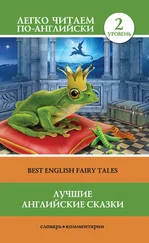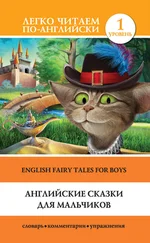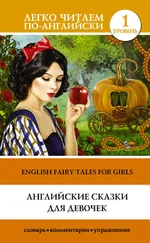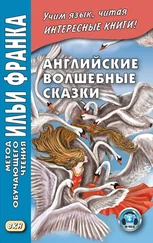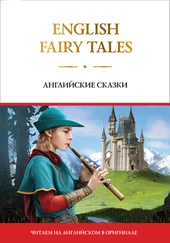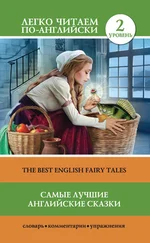Joseph Jacobs - More English Fairy Tales
Здесь есть возможность читать онлайн «Joseph Jacobs - More English Fairy Tales» весь текст электронной книги совершенно бесплатно (целиком полную версию без сокращений). В некоторых случаях можно слушать аудио, скачать через торрент в формате fb2 и присутствует краткое содержание. Год выпуска: 1894, Жанр: Сказка, на английском языке. Описание произведения, (предисловие) а так же отзывы посетителей доступны на портале библиотеки ЛибКат.
- Название:More English Fairy Tales
- Автор:
- Жанр:
- Год:1894
- ISBN:нет данных
- Рейтинг книги:5 / 5. Голосов: 1
-
Избранное:Добавить в избранное
- Отзывы:
-
Ваша оценка:
- 100
- 1
- 2
- 3
- 4
- 5
More English Fairy Tales: краткое содержание, описание и аннотация
Предлагаем к чтению аннотацию, описание, краткое содержание или предисловие (зависит от того, что написал сам автор книги «More English Fairy Tales»). Если вы не нашли необходимую информацию о книге — напишите в комментариях, мы постараемся отыскать её.
Illustrated by John D. Batten.
Book text and illustrations are taken from the site www.gutenberg.org
More English Fairy Tales — читать онлайн бесплатно полную книгу (весь текст) целиком
Ниже представлен текст книги, разбитый по страницам. Система сохранения места последней прочитанной страницы, позволяет с удобством читать онлайн бесплатно книгу «More English Fairy Tales», без необходимости каждый раз заново искать на чём Вы остановились. Поставьте закладку, и сможете в любой момент перейти на страницу, на которой закончили чтение.
Интервал:
Закладка:
There still remains the curious parallel from Belfast to which Mrs. Gutch has drawn attention. Magic pipers are not unknown to English folk-lore, as in the Percy ballad of The Frere and the Boy , or in the nursery rhyme of Tom the Piper’s son in its more extended form. But beguiling into a mountain is not known elsewhere except at Hameln, which was made widely known in England by Verstegan’s and Howell’s accounts, so that the Belfast variant is also probably to be traced to the Rattenfänger . Here again, as in the case of Beddgellert ( Celtic Fairy Tales , No. xxi.), the Blinded Giant and the Pedlar of Swaffham ( infra , Nos. lxi., lxiii.), we have an imported legend adapted to local conditions.
XLV. HEREAFTERTHIS
Source. —Sent me anonymously soon after the appearance of English Fairy Tales . From a gloss in the MS. “vitty” = Devonian for “decent,” I conclude the tale is current in Devon. I should be obliged if the sender would communicate with me.
Parallels. —The latter part has a certain similarity with “Jack Hannaford” (No. viii.). Halliwell’s story of the miser who kept his money “for luck” (p. 153) is of the same type. Halliwell remarks that the tale throws light on a passage in Ben Jonson: Say we are robbed, If any come to borrow a spoon or so I will not have Good Fortune or God’s Blessing Let in, while I am busy.
The earlier part of the tale has resemblance with “Lazy Jack” (No. xxvii), the European variants of which are given by M. Cosquin, Contes de Lorraine , i., 241. Jan’s satisfaction with his wife’s blunders is also European (Cosquin, l.c. , i., 157). On minding the door and dispersing robbers by its aid see “Mr. Vinegar” (No. vi.).
Remarks. —“Hereafterthis” is thus a mélange of droll incidents, yet has characteristic folkish touches (“can you milk-y, bake-y,” “when I lived home”) which give it much vivacity.
XLVI. THE GOLDEN BALL
Source. —Contributed to the first edition of Henderson’s Folk-Lore of the Northern Counties , pp. 333-5, by Rev. S. Baring-Gould.
Parallels. —Mr. Nutt gave a version in Folk-Lore Journal , vi., 144. The man in instalments occurs in “The Strange Visitor” (No. xxxii.). The latter part of the tale has been turned into a game for English children, “Mary Brown,” given in Miss Plunket’s Merry Games , but not included in Newell, Games and Songs of American Children .
Remarks. —This story is especially interesting as having given rise to a game. Capture and imprisonment are frequently the gruesome motif of children’s games, as in “Prisoner’s base.” Here it has been used with romantic effect.
XLVII. MY OWN SELF
Source. —Told to Mrs. Balfour by Mrs. W., a native of North Sunderland, who had seen the cottage and heard the tale from persons who had known the widow and her boy, and had got the story direct from them. The title was “Me A’an Sel’,” which I have altered to “My Own Self.”
Parallels. —Notwithstanding Mrs. Balfour’s informant, the same tale is widely spread in the North Country. Hugh Miller relates it, in his Scenes from my Childhood , as “Ainsel”; it is given in Mr. Hartland’s English Folk and Fairy Tales ; Mr. F.B. Jevons has heard it in the neighbourhood of Durham; while a further version appeared in Monthly Chronicle of North Country Folk-Lore . Further parallels abroad are enumerated by Mr. Clouston in his Book of Noodles , pp. 184-5, and by the late Prof. Köhler in Orient und Occident , ii., 331. The expedient by which Ulysses outwits Polyphemus in the Odyssey by calling himself ουτις is clearly of the same order.
Remarks. —The parallel with the Odyssey suggests the possibility that this is the ultimate source of the legend, as other parts of the epic have been adapted to local requirements in Great Britain, as in the “Blinded Giant” (No. lxi.), or “Conall Yellowclaw” ( Celtic Fairy Tales , No. v.). The fact of Continental parallels disposes of the possibility of its being a merely local legend. The fairies might appear to be in a somewhat novel guise here as something to be afraid of. But this is the usual attitude of the folk towards the “Good People,” as indeed their euphemistic name really implies.
XLVIII. THE BLACK BULL OF NORROWAY
Source. —Chambers’s Popular Rhymes of Scotland , much Anglicised in language, but otherwise unaltered.
Parallels. —Chambers, l.c. , gave a variant with the title “The Red Bull o’ Norroway.” Kennedy, Legendary Fictions , p. 87, gives a variant with the title “The Brown Bear of Norway.” Mr. Stewart gave a Leitrim version, in which “Norroway” becomes “Orange,” in Folk-Lore for June, 1893, which Miss Peacock follows up with a Lincolnshire parallel (showing the same corruption of name) in the September number. A reference to the “Black Bull o’ Norroway” occurs in Sidney’s Arcadia , as also in the Complaynt of Scotland , 1548. The “sale of bed” incident at the end has been bibliographised by Miss Cox in her volume of variants of Cinderella , p. 481. It probably existed in one of the versions of Nix Nought Nothing (No. vii.).
Remarks. —The Black Bull is clearly a Beast who ultimately wins a Beauty. But the tale as is told is clearly not sufficiently motivated. Miss Peacock’s version renders it likely that a fuller account may yet be recovered in England.
XLIX. YALLERY BROWN
Source. —Mrs. Balfour’s “Legends of the Lincolnshire Fens,” in Folk-Lore , ii. It was told to Mrs. Balfour by a labourer, who professed to be the hero of the story, and related it in the first person. I have given him a name, and changed the narration into the oblique narration, and toned down the dialect.
Parallels. —“Tiddy Mun,” the hero of another of Mrs. Balfour’s legends ( l.c. , p. 151) was “none bigger ’n a three years old bairn,” and had no proper name.
Remarks. —One might almost suspect Mrs. Balfour of being the victim of a piece of invention on the part of her autobiographical informant. But the scrap of verse, especially in its original dialect, has such a folkish ring that it is probable he was only adapting a local legend to his own circumstances.
L. THE THREE FEATHERS
Source. —Collected by Mrs. Gomme from some hop-pickers near Deptford.
Parallels. —The beginning is à la Cupid and Psyche, on which Mr. Lang’s monograph in the Carabas series is the classic authority. The remainder is an Eastern tale, the peregrinations of which have been studied by Mr. Clouston in his Pop. Tales and Fictions , ii., 289, seq. The Wright’s Chaste Wife is the English fabliau on the subject. M. Bédier, in his recent work on Les Fabliaux , pp. 411-13, denies the Eastern origin of the fabliau , but in his Indiaphobia M. Bédier is capable de tout . In the Indian version the various messengers are sent by the king to test the chastity of a peerless wife of whom he has heard. The incident occurs in some versions of the “Battle of the Birds” story ( Celtic Fairy Tales , No. xxiv.), and considering the wide spread of this in the British Isles, it was possibly from this source that it came to Deptford.
LI. SIR GAMMER VANS
Source. —Halliwell’s Nursery Rhymes and Tales.
Читать дальшеИнтервал:
Закладка:
Похожие книги на «More English Fairy Tales»
Представляем Вашему вниманию похожие книги на «More English Fairy Tales» списком для выбора. Мы отобрали схожую по названию и смыслу литературу в надежде предоставить читателям больше вариантов отыскать новые, интересные, ещё непрочитанные произведения.
Обсуждение, отзывы о книге «More English Fairy Tales» и просто собственные мнения читателей. Оставьте ваши комментарии, напишите, что Вы думаете о произведении, его смысле или главных героях. Укажите что конкретно понравилось, а что нет, и почему Вы так считаете.

